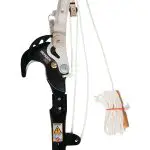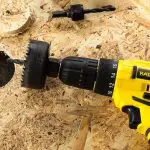Your existing baseboards are due for replacement, or you are about to install new baseboards. At first glance, it seems like an easy job, but secretly it is a time-consuming job. We have handy tips for you to determine the suitable length and angle of a skirting board. We also tell you how to cut tall baseboards with a miter saw. A miter saw is a perfect machine that is used for making precise crosscuts.
Baseboard installation is a great way to add character and charm to any room. When installing baseboards, it can be tricky to make perfect cuts for tall baseboards. One of the easiest ways to achieve precise cuts for tall baseboards is by using a miter saw. In this guide, we’ll discuss how to safely and accurately cut your tall baseboards with a miter saw.
1. Preparing Your Work Area:
Before you begin cutting your tall baseboard, it’s important that you take all the necessary safety precautions. Make sure the area you are working in is clear of any debris or items that could cause potential hazards when operating the miter saw. Be sure to wear safety goggles or glasses when cutting with a miter saw, as well as ear protection if necessary.
2. Setting Up The Miter Saw:
Now that you have your work area prepared and safe, it’s time to set up the miter saw. Start by positioning the baseboard on the work surface so that one edge is flush against the fence of the miter saw. Make sure that all four corners are aligned correctly so that you get an even cut across the entire length of your baseboard. Once everything is in place, clamp down both sides of your baseboard securely for added stability during the cutting process.
3. Making The Cut:
Once your miter saw is properly set up and your baseboard is clamped in place, you are ready to make the cut. Begin by double-checking to ensure that all four corners of the baseboard are aligned correctly with the fence and blade of the miter saw. Then, using a steady hand, slowly activate the miter saw blade and guide it along the length of your tall baseboard. Be sure to keep focused on the cutting process and never take your hands off of the miter saw until it has completely stopped rotating.
4. Finishing Up:
Once you have successfully cut through your tall baseboard with a miter saw, inspect both ends for smooth angles or burrs. If everything looks good, use sandpaper or steel wool to smooth out any rough edges. Before moving on to the next piece of baseboard, it’s important that you clean off your miter saw blade and work surface before making any additional cuts.
Cutting tall baseboards with a miter saw is one of the quickest and most accurate ways to get perfect angles for your project. By following these steps, you can ensure that your tall baseboard installation will look professional and beautiful in any room of your home. With the right tools and patience, anyone can cut their own tall baseboards and add an extra touch of class to their interior design.
Watch More on this Video
So here are the best ways you can cut your tall baseboards with a miter saw. Make sure to test your baseboard before fitting and nail it in place. And remember accurately provide some wood glue before joining two pieces together. And make an accurate measure distance between the door casing and the wall.
How to Cut Baseboard Outside Corners With Miter Saw?
Cutting baseboard outside corners with a miter saw is an easy way to add the perfect finishing touches to any room. The process only requires a few simple steps, and once you understand the basics, you can make even more complex cuts for different types of projects. Here’s how to cut baseboard outside corners with a miter saw:
1. Measuring and Marking:
The first step in making your cut is measuring and marking the corner where you need it. Make sure that you measure accurately so that your cut pieces will fit perfectly together when installed. Once you have measured correctly, mark where your cut needs to be made with a pencil or other marking tool.
2. Setting the Miter Saw:
Once you have marked your slot, it’s time to adjust the settings on your miter saw. Most miter saws come with an adjustable base that allows you to set the angle of your cut depending on the type of corner you are cutting. For outside corners, you will want to adjust your miter saw so that the blade is at a 45-degree angle relative to your workpiece.
3. Making the Cut:
Now comes the most important step: making your cut. Make sure that as you are cutting, you keep the blade steady and aligned with your marked line. This will help ensure a clean, accurate cut every time.
4. Checking the Fit:
Once you have finished your cut, it’s important to check for fit before moving on to the next corner. To do this, lay one of the pieces flat and then place the other piece on top of it so that their edges line up. If everything is lined up properly, you should see a perfect miter joint between them. If not, make any necessary adjustments until they fit together correctly.
5. Securely Attaching:
After making sure that both pieces fit together perfectly, it’s time to securely attach them in place. The best way to do this is by using a nail gun or screws depending on what type of baseboard material you are working with. Make sure to attach them securely so that they will hold up over time.
6. Finishing Touches:
Finally, add any finishing touches you would like in order to complete the look of your baseboard corners. This could include caulk or wood filler for a seamless finish, or paint if desired. Once all these steps are completed, your outside corner should look professional and polished!
In conclusion, cutting tall baseboards with a miter saw is easy and achievable. It’s important to set up the saw correctly beforehand in order to ensure a safe and accurate cut. Make sure you use the correct length of the blade for your project. Adjust the miter angle as necessary, adjust the bevel angle if needed, and double-check all measurements before making the cut. With these simple steps in mind, cutting tall baseboards with a miter saw should be an easy task for any DIYer.



















